Bài giảng Introduction to Software Engineering - Week 4: Requirement Engineering - Nguyễn Thị Minh Tuyền
Topics covered
1. Functional and non-functional requirements
2. Requirements engineering processes
3. Requirements elicitation and analysis
4. Requirements specification
5. Requirements validation
6. Requirements management
3Requirements engineering
£ The process of establishing the services that a
customer requires from a system and the
constraints under which it operates and is
developed.
£ The system requirements are the descriptions of
the system services and constraints that are
generated during the requirements engineering
process.
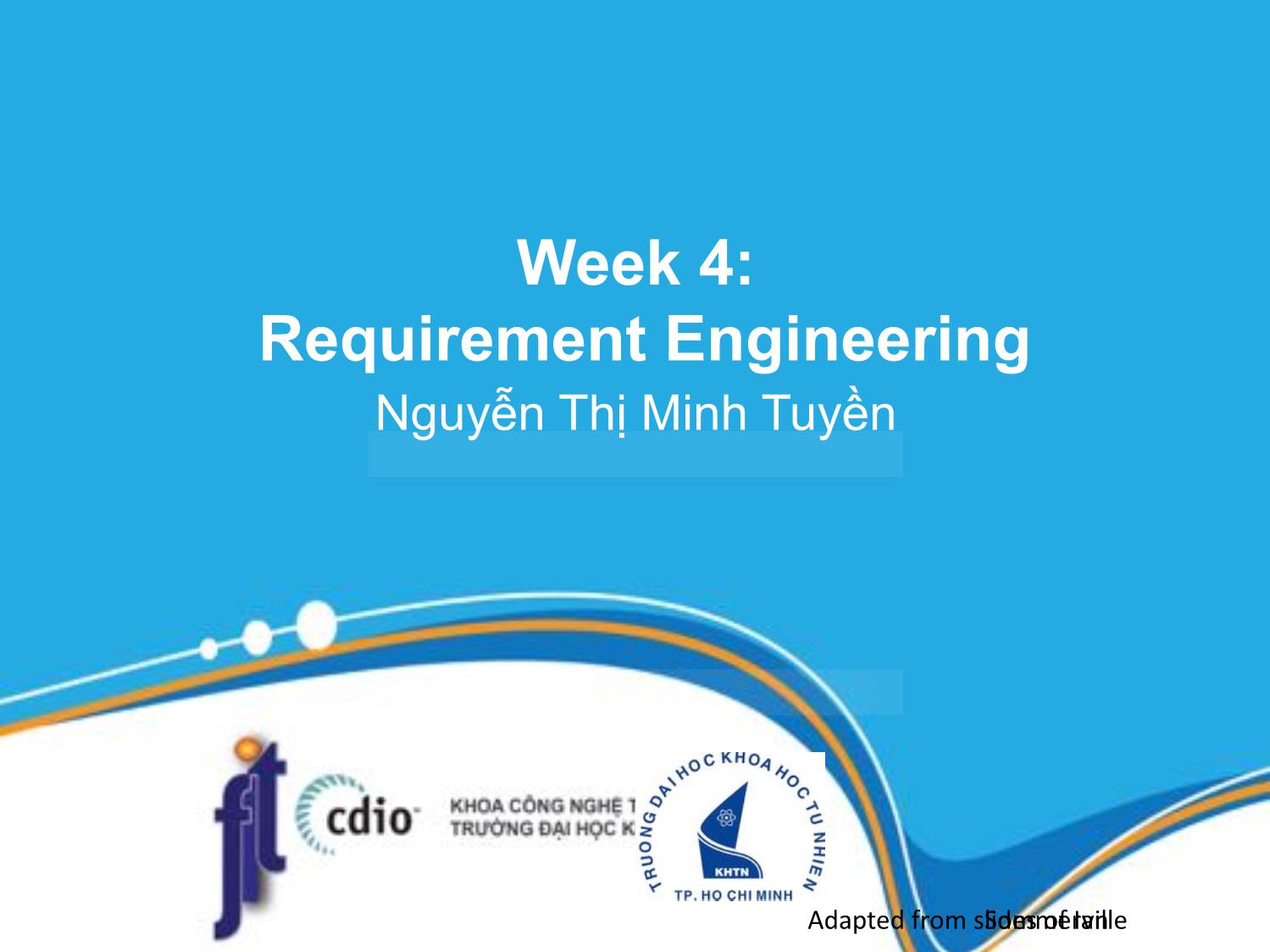
Trang 1
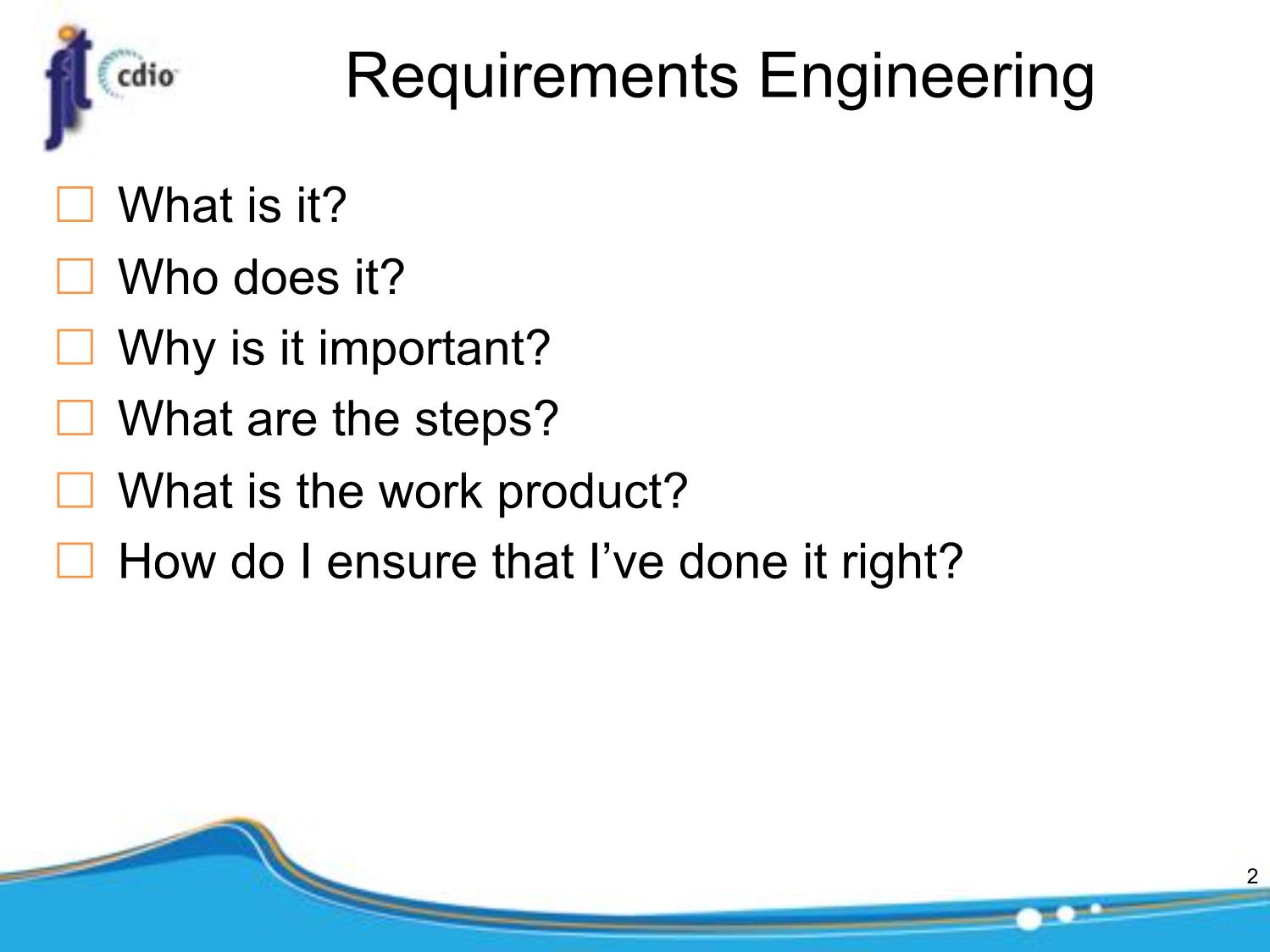
Trang 2
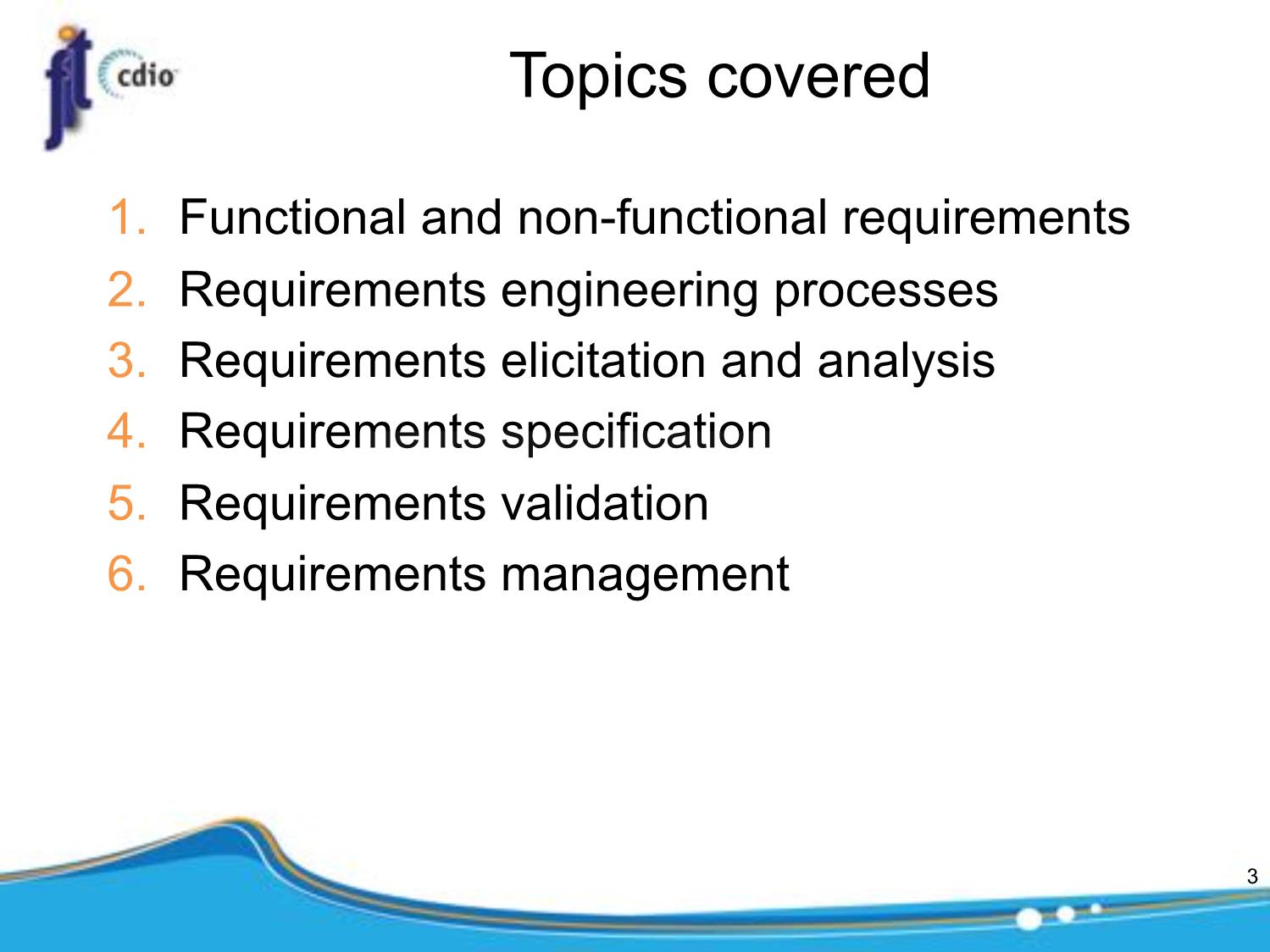
Trang 3
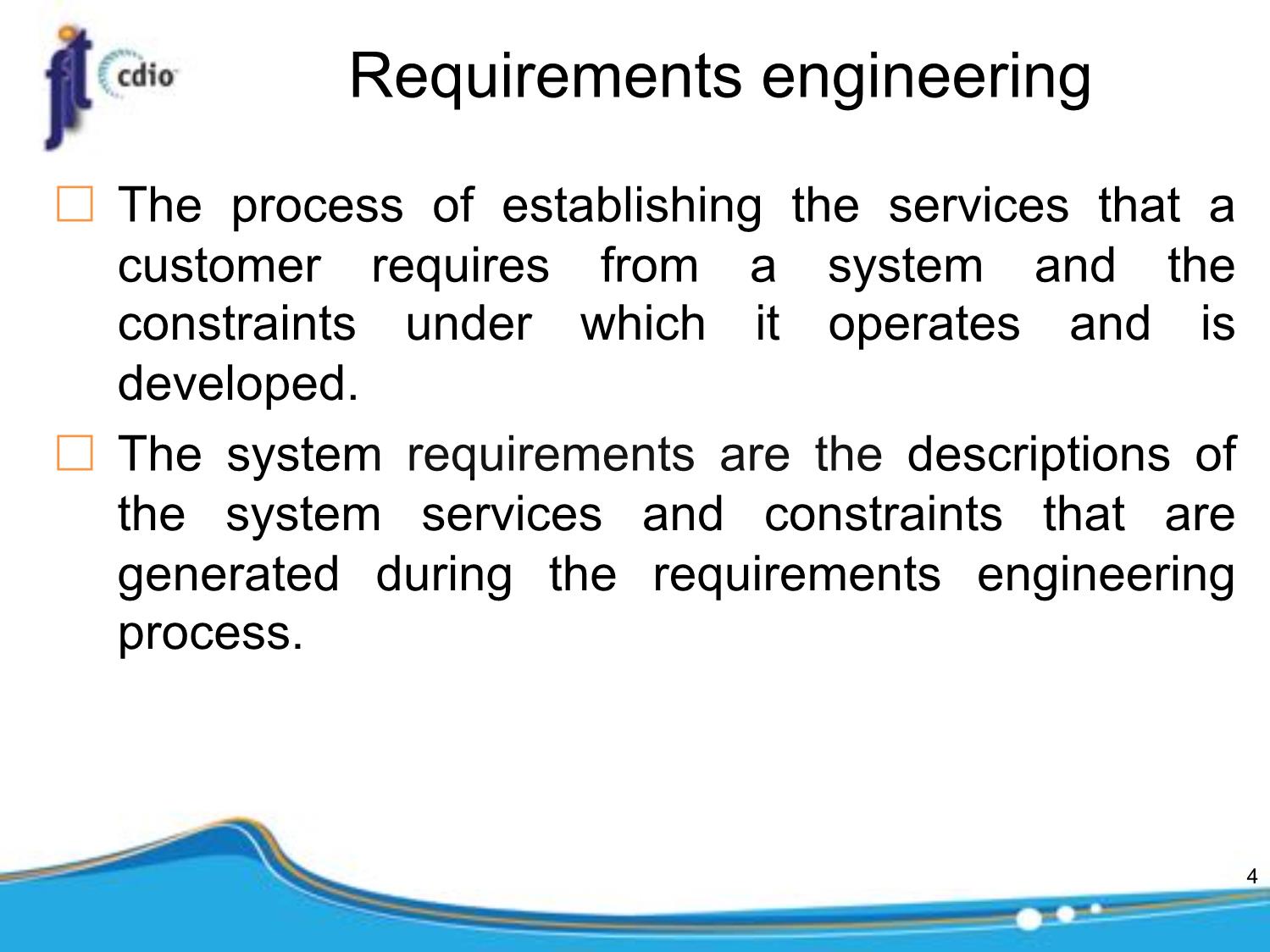
Trang 4
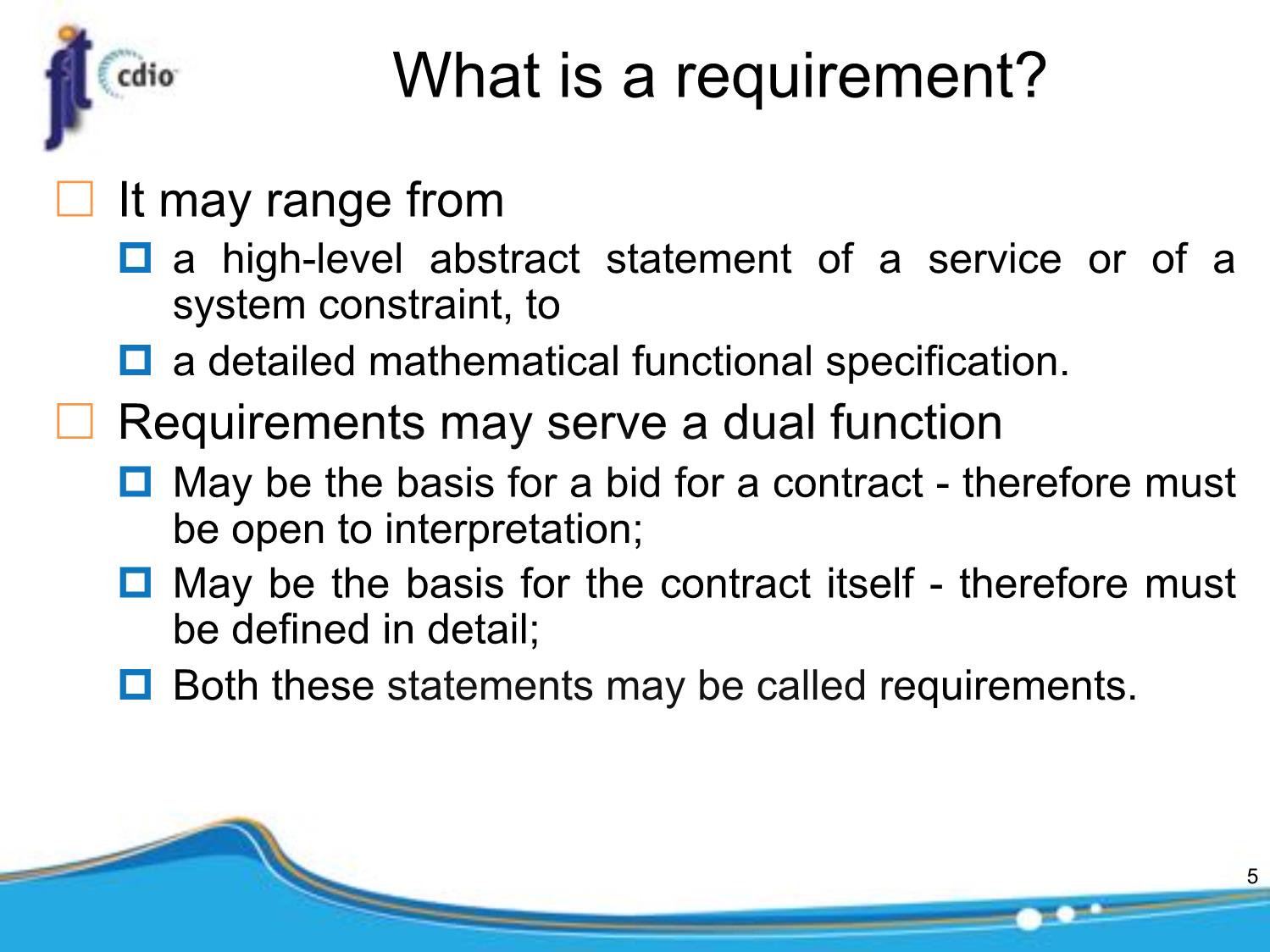
Trang 5
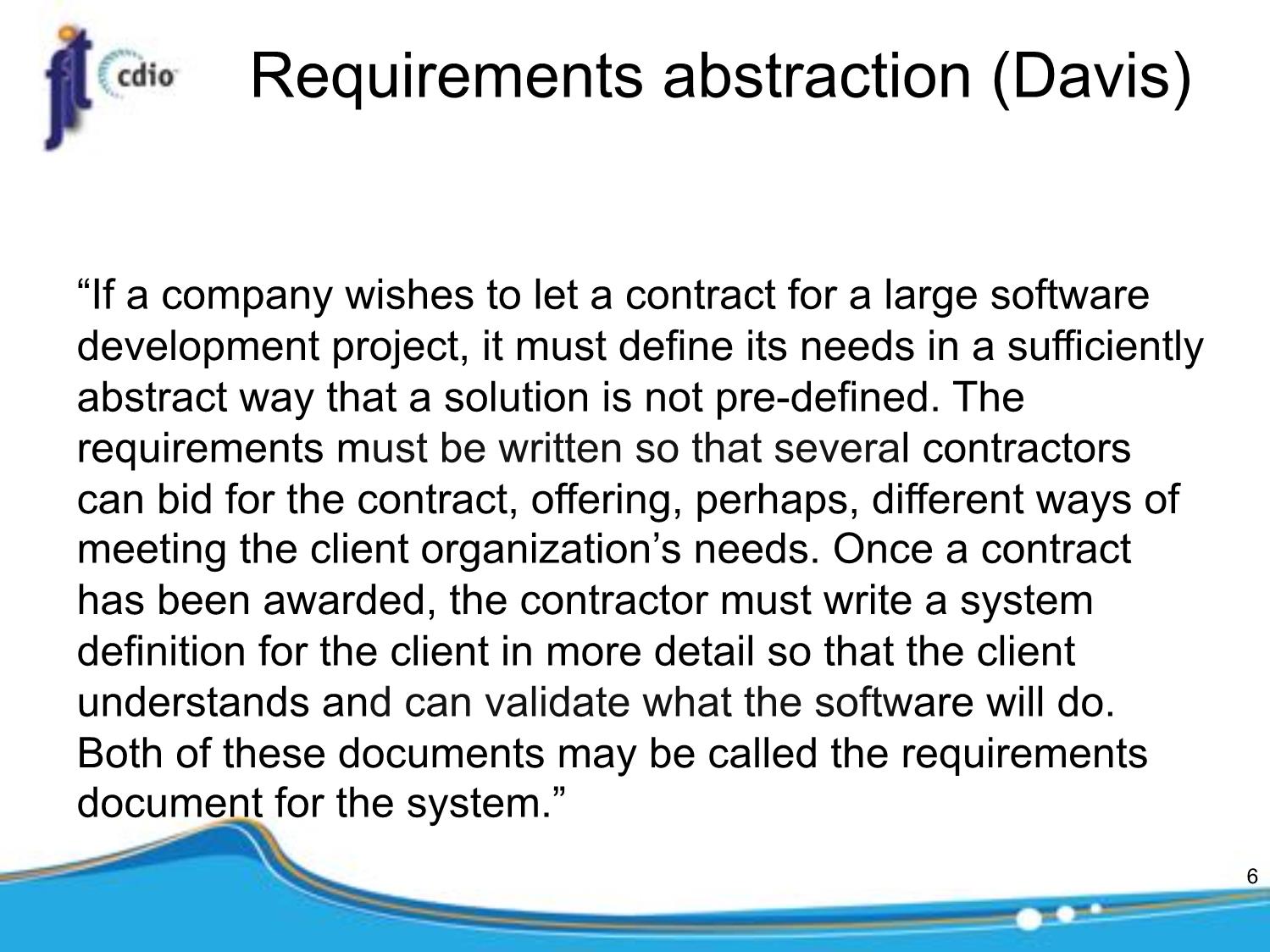
Trang 6
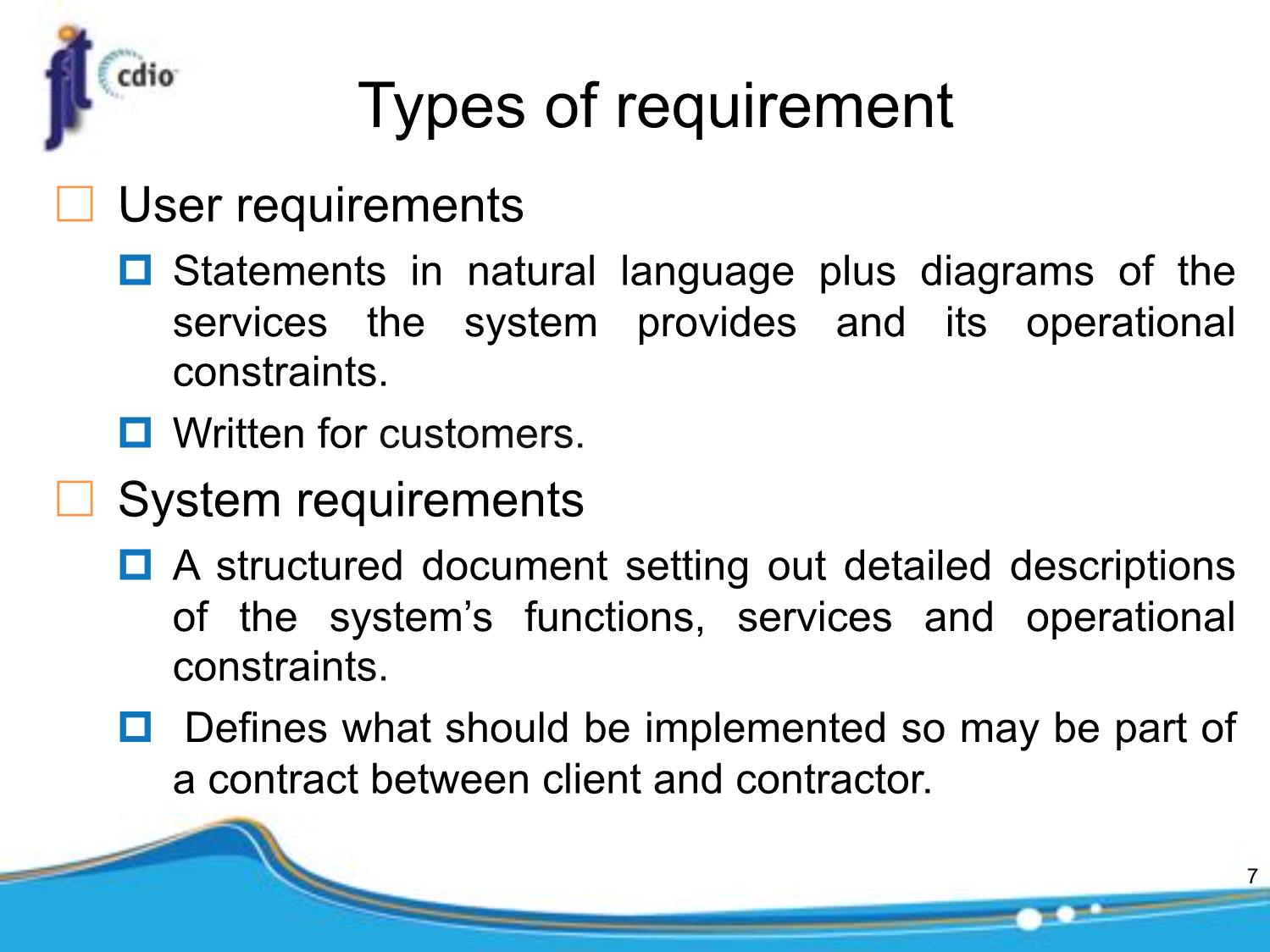
Trang 7
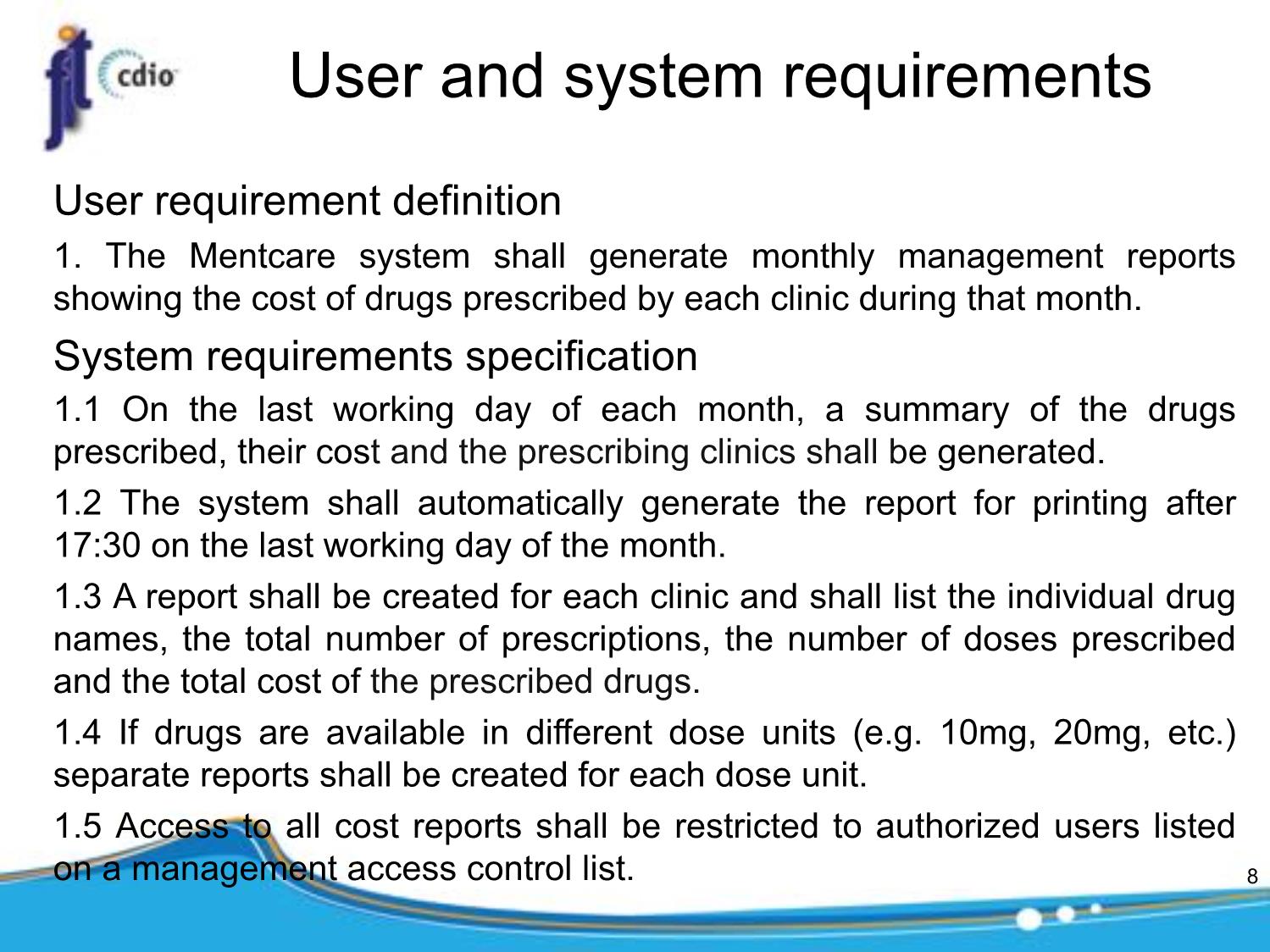
Trang 8
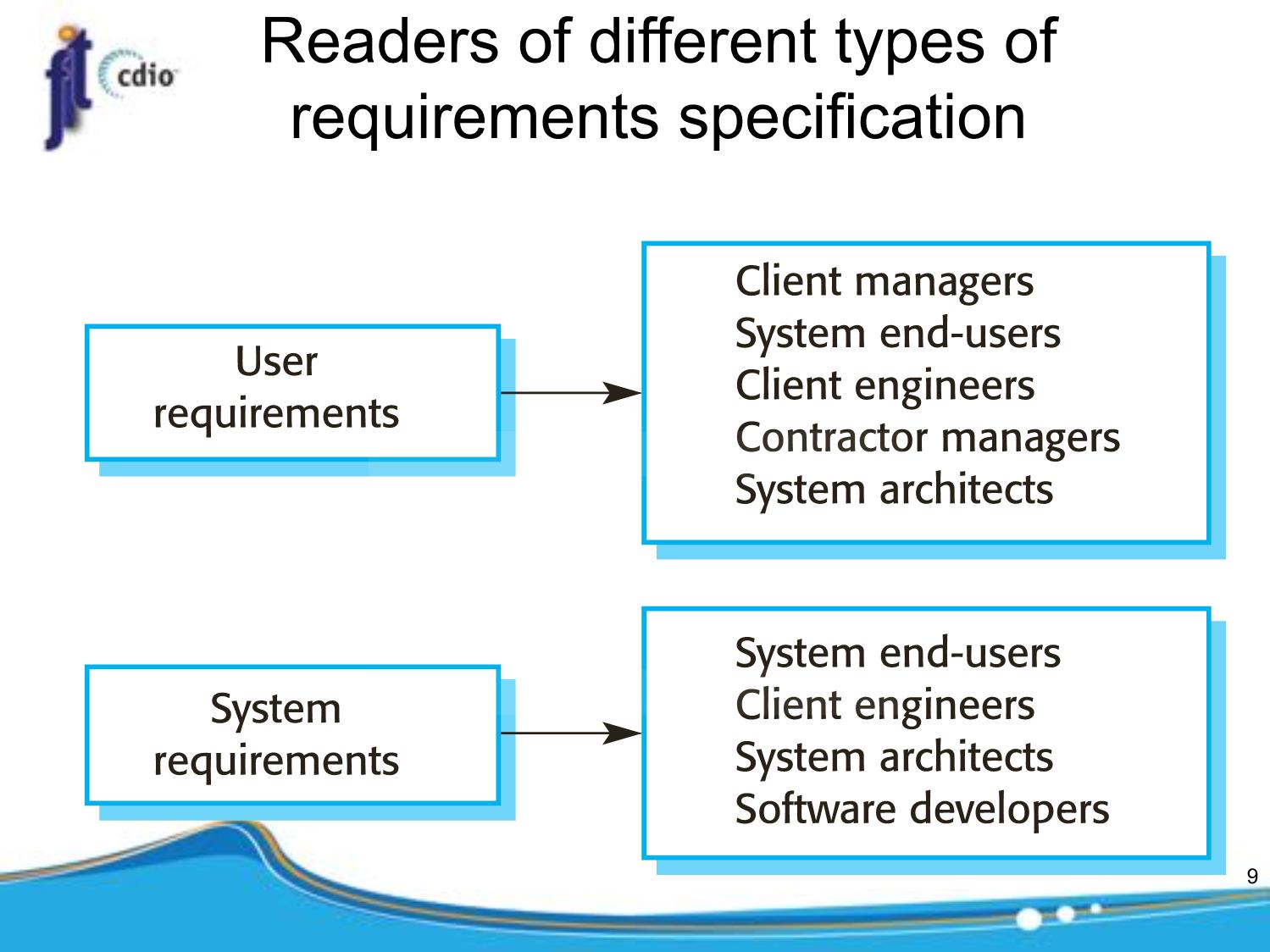
Trang 9
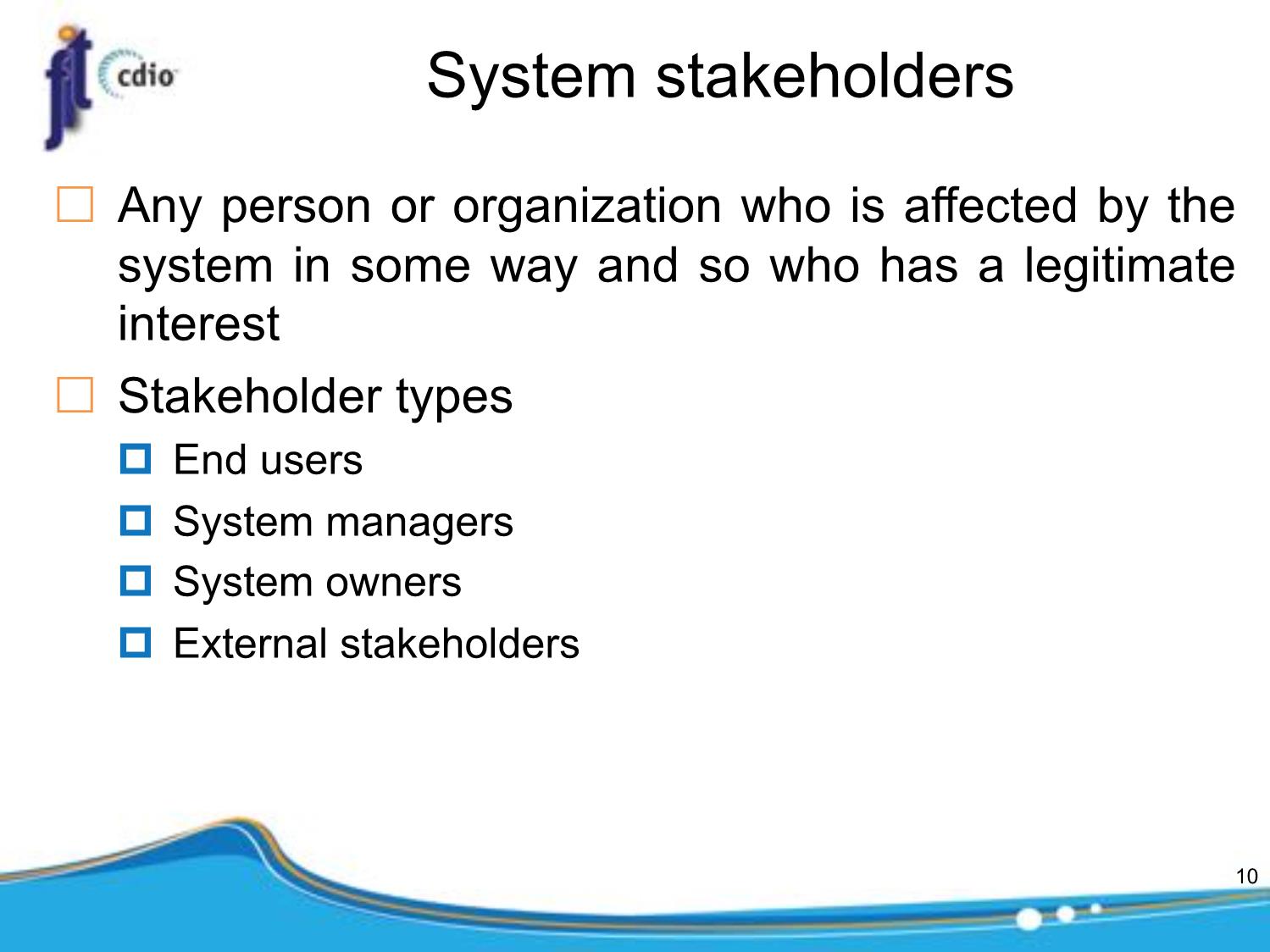
Trang 10
Tải về để xem bản đầy đủ
Bạn đang xem 10 trang mẫu của tài liệu "Bài giảng Introduction to Software Engineering - Week 4: Requirement Engineering - Nguyễn Thị Minh Tuyền", để tải tài liệu gốc về máy hãy click vào nút Download ở trên
Tóm tắt nội dung tài liệu: Bài giảng Introduction to Software Engineering - Week 4: Requirement Engineering - Nguyễn Thị Minh Tuyền
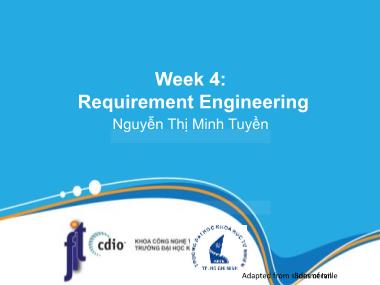
d the photos, the originals are overwritten. If they chose to rename the photos, a new name is automatically generated by adding a number to the existing file name. £ Other activities: The moderator may be logged on to the system and may approve photos as they are uploaded. £ System state on completion: User is logged on. The selected photos have been uploaded and assigned a status ‘awaiting moderation’. Photos are visible to the moderator and to the user who uploaded them. 46 Topics covered 1. Functional and non-functional requirements 2. Requirements engineering processes 3. Requirements elicitation and analysis 4. Requirements specification 5. Requirements validation 6. Requirements management 47 48 Requirements specification £ The process of writing down the user and system requirements in a requirements document. £ User requirements have to be understandable by end- users and customers who do not have a technical background. £ System requirements are more detailed requirements and may include more technical information. p May be part of a contract for the system development p Should therefore be a complete and detailed specification of the whole system. 49 Requirements and design £ In principle: p requirements should state what the system should do and p the design should describe how it does this. £ In practice: requirements and design are inseparable p A system architecture may be designed to structure the requirements; p The system may inter-operate with other systems that generate design requirements; p The use of a specific architecture to satisfy non-functional requirements may be a domain requirement. p This may be the consequence of a regulatory requirement. 50 Ways of writing a system requirements specification 1. Natural language 2. Structured natural language 3. Design description languages 4. Graphical notations 5. Mathematical specifications 51 Natural language specification £ Requirements are written as natural language sentences supplemented by diagrams and tables. £ Used for writing requirements because it is expressive, intuitive and universal. p This means that the requirements can be understood by users and customers. 52 Guidelines for writing requirements £ Invent a standard format and use it for all requirements. £ Use language in a consistent way. £ Use text highlighting to identify key parts of the requirement. £ Avoid the use of computer jargon. £ Include an explanation (rationale) of why a requirement is necessary. 53 Problems with natural language £ Lack of clarity £ Requirements confusion £ Requirements amalgamation 54 Example Requirements for the insulin pump software system 3.2 The system shall measure the blood sugar and deliver insulin, if required, every 10 minutes. (Changes in blood sugar are relatively slow so more frequent measurement is unnecessary; less frequent measurement could lead to unnecessarily high sugar levels.) 3.6 The system shall run a self-test routine every minute with the conditions to be tested and the associated actions defined. (A self-test routine can discover hardware and software problems and alert the user to the fact the normal operation may be impossible.) 55 Structured specifications £ The freedom of the requirements writer is limited and requirements are written in a standard way. £ This approach maintains most of the expressiveness and understandability of natural language but ensures that some uniformity is imposed on the specification £ This works well for some types of requirements e.g. requirements for embedded control system but is sometimes too rigid for writing business system requirements. 56 A structured specification of a requirement for an insulin pump [1] Insulin Pump/Control Software/SRS/3.3.2 Function Compute insulin dose: safe sugar level. Description Computes the dose of insulin to be delivered when the current measured sugar level is in the safe zone between 3 and 7 units. Inputs Current sugar reading (r2); the previous two readings (r0 and r1). Source Current sugar reading from sensor. Other readings from memory. Outputs CompDose—the dose in insulin to be delivered. Destination Main control loop. 57 A structured specification of a requirement for an insulin pump [2] Action CompDose is zero if the sugar level is stable or falling or if the level is increasing but the rate of increase is decreasing. If the level is increasing and the rate of increase is increasing, then CompDose is computed by dividing the difference between the current sugar level and the previous level by 4 and rounding the result. If the result, is rounded to zero then CompDose is set to the minimum dose that can be delivered. Requirements Two previous readings so that the rate of change of sugar level can be computed. Pre-condition The insulin reservoir contains at least the maximum allowed single dose of insulin. Post-condition r0 is replaced by r1 then r1 is replaced by r2. Side effects None. 58 Tabular specification £ Used to supplement natural language. £ Particularly useful when you have to define a number of possible alternative courses of action. £ For example: p the insulin pump systems bases its computations on the rate of change of blood sugar level and the tabular specification explains how to calculate the insulin requirement for different scenarios. 59 Tabular specification of computation for an insulin pump Condition Action Sugar level falling (r2 < r1) CompDose = 0 Sugar level stable (r2 = r1) CompDose = 0 Sugar level increasing and rate of increase CompDose = 0 decreasing ((r2 – r1) < (r1 – r0)) Sugar level increasing and rate of increase CompDose = round ((r2 – r1)/4) stable or increasing ((r2 – r1) ≥ (r1 – r0)) If rounded result = 0 then CompDose = MinimumDose 60 Use cases £ Use-cases are a kind of scenario that are included in the UML. £ Use cases identify the actors in an interaction and which describe the interaction itself. £ A set of use cases should describe all possible interactions with the system. £ High-level graphical model supplemented by more detailed tabular description £ UML sequence diagrams may be used to add detail to use-cases by showing the sequence of event processing in the system. 61 Use cases for the Mentcare system Register Export patient statistics View Manager Generate Medical receptionist personal info. report View record Nurse Doctor Edit record Setup consultation 62 The software requirements document £ The software requirements document is the official statement of what is required of the system developers. £ Should include both a definition of user requirements and a specification of the system requirements. £ It is NOT a design document. As far as possible, it should set of WHAT the system should do rather than HOW it should do it. 63 Users of a requirements document Specify the requirements and System read them to check that they customers meet their needs. Customers specify changes to the requirements. Use the requirements Managers document to plan a bid for the system and to plan the system development process. System Use the requirements to engineers understand what system is to be developed. System test Use the requirements to engineers develop validation tests for the system. System Use the requirements to maintenance understand the system and 64 engineers the relationships between its parts. Requirements document variability £ Information in requirements document depends on type of system and the approach to development used. £ Systems developed incrementally will, typically, have less detail in the requirements document. £ Requirements documents standards have been designed e.g. IEEE standard. These are mostly applicable to the requirements for large systems engineering projects. 65 Structure of a requirements document Chapter Description Preface This should define the expected readership of the document and describe its version history, including a rationale for the creation of a new version and a summary of the changes made in each version. Introduction This should describe the need for the system. It should briefly describe the system’s functions and explain how it will work with other systems. It should also describe how the system fits into the overall business or strategic objectives of the organization commissioning the software. Glossary This should define the technical terms used in the document. You should not make assumptions about the experience or expertise of the reader. User requirements Here, you describe the services provided for the user. The nonfunctional definition system requirements should also be described in this section. This description may use natural language, diagrams, or other notations that are understandable to customers. Product and process standards that must be followed should be specified. System architecture This chapter should present a high-level overview of the anticipated system architecture, showing the distribution of functions across system modules. Architectural components that are reused should be highlighted. 66 Structure of a requirements document Chapter Description System This should describe the functional and nonfunctional requirements in more detail. requirements If necessary, further detail may also be added to the nonfunctional requirements. specification Interfaces to other systems may be defined. System models This might include graphical system models showing the relationships between the system components and the system and its environment. Examples of possible models are object models, data-flow models, or semantic data models. System evolution This should describe the fundamental assumptions on which the system is based, and any anticipated changes due to hardware evolution, changing user needs, and so on. This section is useful for system designers as it may help them avoid design decisions that would constrain likely future changes to the system. Appendices These should provide detailed, specific information that is related to the application being developed; for example, hardware and database descriptions. Hardware requirements define the minimal and optimal configurations for the system. Database requirements define the logical organization of the data used by the system and the relationships between data. Index Several indexes to the document may be included. As well as a normal alphabetic index, there may be an index of diagrams, an index of functions, and so on. 67 Topics covered 1. Functional and non-functional requirements 2. Requirements engineering processes 3. Requirements elicitation and analysis 4. Requirements specification 5. Requirements validation 6. Requirements management 68 Requirements validation £ Concerned with demonstrating that the requirements define the system that the customer really wants. £ Requirements error costs are high so validation is very important p Fixing a requirements error after delivery may cost up to 100 times the cost of fixing an implementation error. 69 Requirements checking £ Validity p Does the system provide the functions which best support the customer’s needs? £ Consistency p Are there any requirements conflicts? £ Completeness p Are all functions required by the customer included? £ Realism p Can the requirements be implemented given available budget and technology £ Verifiability 70 ptheCanrequirements be checked? Requirements validation techniques £ Requirements reviews p Systematic manual analysis of the requirements. £ Prototyping p Using an executable model of the system to check requirements. £ Test-case generation p Developing tests for requirements to check testability. 71 Requirements reviews £ Regular reviews should be held while the requirements definition is being formulated. £ Both client and contractor staff should be involved in reviews. £ Reviews may be formal (with completed documents) or informal. Good communications between developers, customers and users can resolve problems at an early stage. 72 Review checks £ Verifiability p Is the requirement realistically testable? £ Comprehensibility p Is the requirement properly understood? £ Traceability p Is the origin of the requirement clearly stated? £ Adaptability p Can the requirement be changed without a large impact on other requirements? 73 Topics covered 1. Functional and non-functional requirements 2. Requirements specification 3. Requirements engineering processes 4. Requirements elicitation and analysis 5. Requirements validation 6. Requirements management 74 Changing requirements £ The business and technical environment of the system always changes after installation. £ The people who pay for a system and the users of that system are rarely the same people. £ Large systems usually have a diverse user community, with many users having different requirements and priorities that may be conflicting or contradictory. 75 Requirements management £ Is the process of managing changing requirements during the requirements engineering process and system development. £ You need to p keep track of individual requirements and maintain links between dependent requirements so that you can assess the impact of requirements changes. p establish a formal process for making change proposals and linking these to system requirements. 76 Requirements evolution Initial Changed understanding understanding of problem of problem Initial Changed requirements requirements Time 77 Requirements management planning £ Planning is an essential first stage, it establishes the level of requirements management detail that is required. £ During the requirements management, we have to decide on: p Requirements identification Each requirement must be uniquely identified so that it can be cross-referenced with other requirements. p A change management process This is the set of activities that assess the impact and cost of changes. p Traceability policies These policies define the relationships between each requirement and between the requirements and the system design that should be recorded. 78 p Tool support Tools that may be used range from specialist requirements management systemsspreadsheetsto and Requirements change management Identified Revised problem Problem analysis and Change analysis Change requirements change specification and costing implementation 79 Questions? 80
File đính kèm:
 bai_giang_introduction_to_software_engineering_week_4_requir.pdf
bai_giang_introduction_to_software_engineering_week_4_requir.pdf

